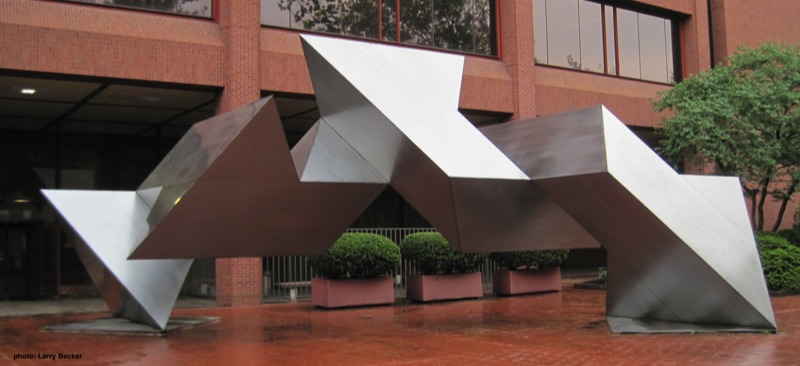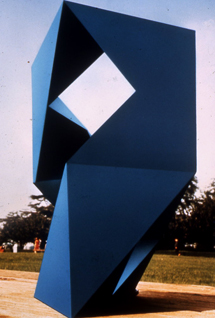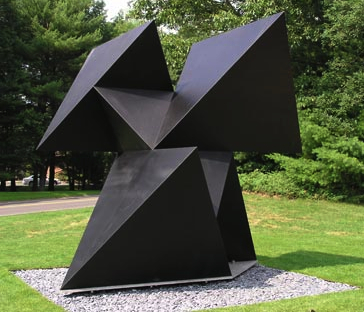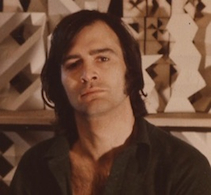
Biography

Upon graduation from the Darrow School in New Lebanon, NY. Fredenthal came to Philadelphia to attend the University of Pennsylvania and later entered the Graduate School of Fine Arts in Architecture. However, his architectural studies were interrupted in 1964 by the onset of what was later diagnosed as Parkinson's Disease which made it increasingly difficult for him to draw or fabricate large constructions. He turned from the pursuit of an architectural career to the sculptural exploration of geometry and began to make small models of variations on simple forms like the cube and tetrahedron. At this time, the School of Architecture was under the visionary thinking of Louis Kahn and Robert Le Ricolais with whom Fredenthal had contact. He also had close association, both as a student and later professionally, with Romaldo Giurgola, Robert Engman, Robert Venturi, Denise Scott Brown and Anne Tyng. By 1967, excited by the limitless possibilities in the combination of geometric shapes and volumes, Fredenthal had developed a satisfactory working method of producing precise cardboard models of his conceptions with the aid of assistants. A Tony Smith sculpture exhibition at the ICA in 1966-67, stimulated him to introduce sculpturally complex forms and combinations into his work. Fredenthal was awarded his "Masters" of Architecture from Penn in 1967 for his stunning and original work and influence upon his peers.


http://www.philly.com/philly/obituaries/57680597.html
Posted on Tue, Sep. 8, 2009
Artist Robinson Fredenthal, 69
By Walter F. Naedele
Inquirer Staff Writer
He thought large. But he had to work small.
When Robinson Fredenthal was 24, his architectural studies at the University of Pennsylvania were slowed by the onset of Parkinson's disease.
That made it, he wrote later of himself, "increasingly difficult for him to draw or fabricate large constructions."
"He turned from the pursuit of an architectural career to the sculptural exploration of geometry & began to make small models of variations on simple forms like the cube."
And so, by the time that he did earn his Penn degree in architecture in 1967, he was on the way toward selling his huge sculptures for public places throughout Philadelphia and beyond.
On Aug. 31, Mr. Fredenthal, 69, died of complications from Parkinson's disease at Lankenau Hospital in Wynnewood.
He had lived since 2003 at Inglis House, the West Philadelphia home for people with severe disabilities.
"By 1967, excited by the limitless possibilities in the combination of geometric shapes and volumes," he wrote of himself, Mr. Fredenthal "had developed a satisfactory working method of producing precise cardboard models of his conceptions with the aid of assistants."
In 1973, his three-part work, Fire Water Ice, was installed at 1234 Market St., now headquarters for SEPTA. The largest of the three stood 48 feet high & weighed 9 tons.
In 1977, his White Water was placed at what was a Philadelphia National Bank site at Fifth and Market Streets.
In 1984, his Black Forest began to grace the Penn campus near 34th and Walnut.
And in a contrast in scale, 157 of his cardboard models were displayed for a few months in 2006 and 2007 at Terminal C of the Philadelphia International Airport.
Born in Claremont, N.H., Mr. Fredenthal graduated in 1959 from the Darrow School in New Lebanon, N.Y., his sister Ruth Ann said. He earned his Penn bachelor of arts in 1963 before his architecture degree in 1967.
Inquirer art critic Edward J. Sozanski, in a 1994 review, wrote that Mr. Fredenthal "has spent a career translating the intellectual discipline that geometry imposes on the mind into sculpture." "Like the artist, the viewer can become caught up in the quest to find surprises where few are expected."
In 1974, a writer preparing a piece about the 33-year-old artist for The Inquirer visited his apartment above La Terrasse, the restaurant in the 3400 block of Sansom Street, across from Penn's law school.
"There are hours in the day," she wrote, "when one of the most promising young sculptors in America cannot stir honey into his own tea . . . when he cannot sit in a chair without writhing, his limbs working themselves into such disarray that it seems a miracle for him to be upright at all." But when his anti-Parkinson's medicine was working properly, Mr. Fredenthal told the writer, he felt blessed.
Of the forms with which he worked, he said, "The mystery is how these things keep relating to each other even when they're not meant to. . . .
"I feel like the geometry is God-given."
Besides his sister, Mr. Fredenthal is survived by his mother, Miriam, and half-brothers Richard Whitney and Michael Fredenthal. His father, David, died in 1958.
Memorials are planned for undetermined dates at Inglis House, 2600 Belmont Ave. and the Architectural Archives of the University of Pennsylvania, 220 S. 34th St.